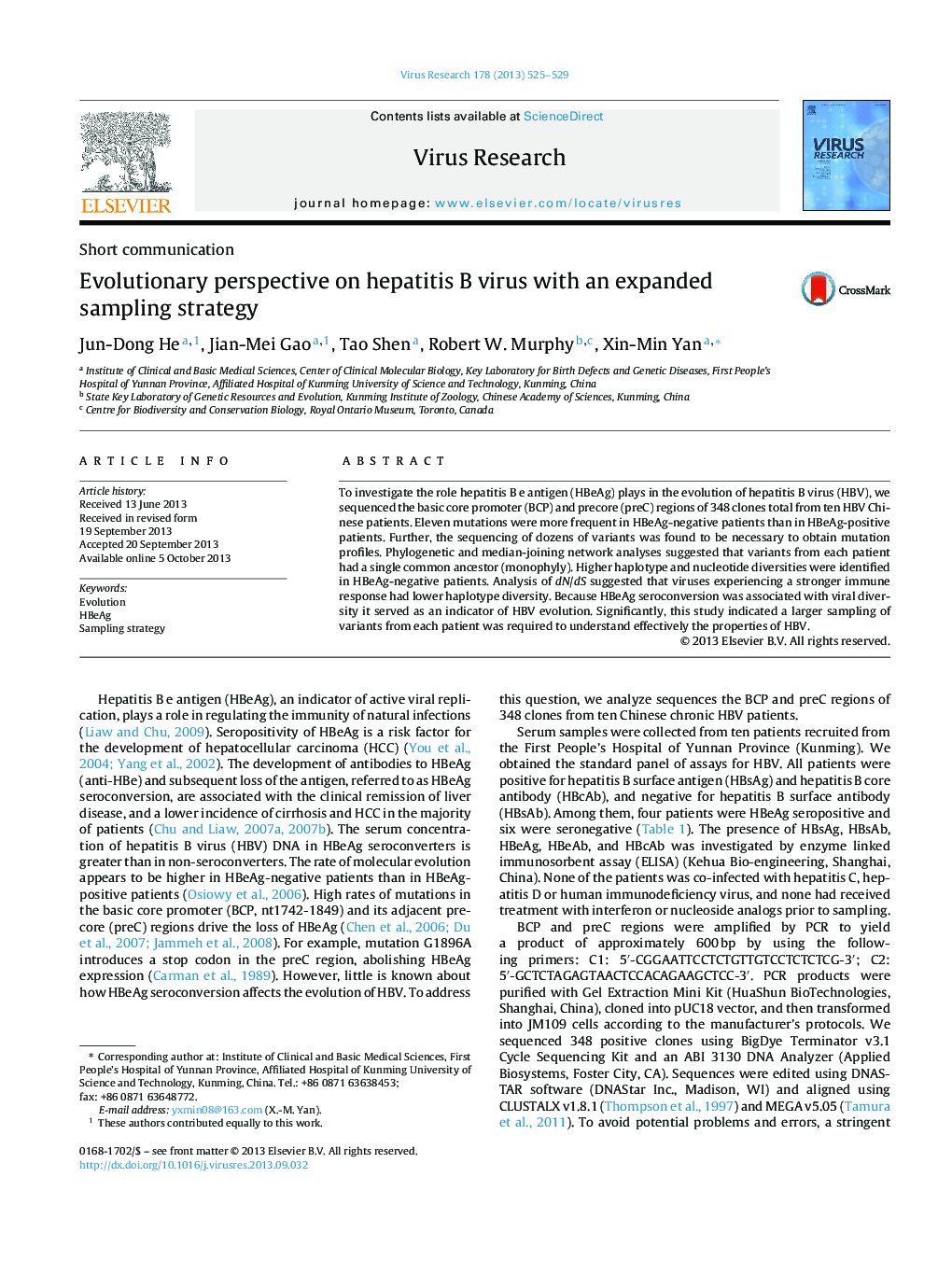| Article ID | Journal | Published Year | Pages | File Type |
|---|---|---|---|---|
| 6142758 | Virus Research | 2013 | 5 Pages |
â¢Our research provided greater information on mutation profiles.â¢Viruses experiencing a stronger immune response had lower haplotype diversity.â¢HBeAg seroconversion could serve as an indicator of HBV evolution.â¢Our work provided a sampling strategy for researchers in future studies.
To investigate the role hepatitis B e antigen (HBeAg) plays in the evolution of hepatitis B virus (HBV), we sequenced the basic core promoter (BCP) and precore (preC) regions of 348 clones total from ten HBV Chinese patients. Eleven mutations were more frequent in HBeAg-negative patients than in HBeAg-positive patients. Further, the sequencing of dozens of variants was found to be necessary to obtain mutation profiles. Phylogenetic and median-joining network analyses suggested that variants from each patient had a single common ancestor (monophyly). Higher haplotype and nucleotide diversities were identified in HBeAg-negative patients. Analysis of dN/dS suggested that viruses experiencing a stronger immune response had lower haplotype diversity. Because HBeAg seroconversion was associated with viral diversity it served as an indicator of HBV evolution. Significantly, this study indicated a larger sampling of variants from each patient was required to understand effectively the properties of HBV.
